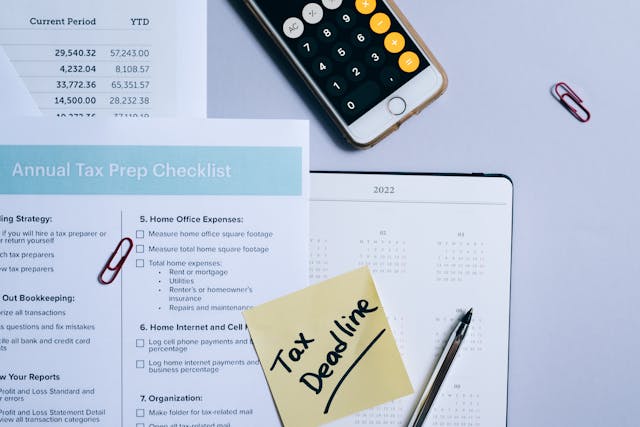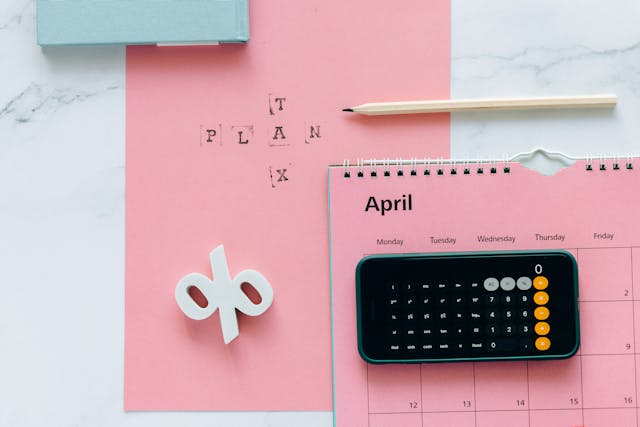How to Build Your First Budget in 5 Simple Steps doesn’t have to be too much to deal with. You may take charge of your money, lower your stress level, and reach your financial objectives with the aid of a carefully thought-out budget. We’ll break it down into five easy steps in this post that anyone may follow. Let’s begin!
Step 1: Determine Your Earnings
The first step in creating a budget is figuring out how much money you make.

List all of your revenue streams, including your salary, freelancing earnings, rental income, and any other funds. Make sure both sources are taken into consideration, for instance, if you have a side business in addition to your full-time job.
Determine your monthly income: If your income is erratic, estimate it by averaging the previous several months. For greater accuracy, commission-based employees or freelancers can utilise their lowest earning month as a baseline.
Keep track of unforeseen income: Add bonuses, presents, or tax returns to your income, but instead of using them to cover regular expenses, consider them as opportunity to save money or settle debt.
A realistic budget starts with knowing your income. You can make better financial judgements if you know how much money you’re dealing with.
Step 2: Keep Tabs on Your Spending
You must understand where your money is going if you want to handle it well. Finding expenditure patterns and possible areas for savings requires this stage.

Sort your expenses into categories: Sort spending into two categories: variable (groceries, entertainment) and fixed (rent, utilities). While variable expenses might fluctuate from month to month, fixed expenses stay the same.
Employ applications or tools: A basic Excel spreadsheet or programs like Mint or PocketGuard can be used to effectively track spending. These tools can also point out areas for development and offer insights into spending trends.
Examine previous transactions: To get a better idea, examine your bank statements from the previous two to three months. Check for services you no longer use or recurring subscriptions.
Keep needs and wants apart: Make a clear distinction between necessities like rent and food and indulgences like subscriptions or eating out. This aids in setting spending priorities.
Surprising patterns, such splurging on subscriptions or eating out, may become apparent when expenses are tracked. You’ll be more prepared to make changes once you have this knowledge.
Step 3: Establish Budgetary Objectives
When a budget is linked to specific financial goals, it works best. Establishing objectives make the process more enjoyable and provides you with motivation to stay within your spending limit.

Short-term objectives: Paying off a modest debt, buying a new device, or saving for a trip are a few examples. Usually, these objectives can be accomplished in a few months to a year.
Long-term objectives: Consider saving for emergencies, purchasing a home, or retiring. These objectives call for years of steady work.
Set priorities for your goals: Sort them according to importance and urgency. For instance, saving for a luxury item might not be as important as creating an emergency fund.
Be precise and quantifiable: Rather than stating, “Save money,” make sure your goal is clear and quantifiable. For example, “Save 5 lakhs for an emergency fund in 12 months.”
Having clear objectives gives your budget focus and purpose. Seeing your goals get closer to reality encourages you to maintain your discipline.
Step 4. Create Your Budget in Step Four
It’s time to compile everything now. This phase is creating a budget that fits your financial objectives and way of life.

Select a method for budgeting: Popular choices include of:
The 50/30/20 guideline states that you should set aside 50% of your income for necessities, 30% for wants, and 20% for debt repayment or savings.
Envelope system: For distinct spending categories, use paper or electronic envelopes. No additional money can be spent in that category after an envelope is empty.
Assign each dollar of your income to a task so that revenue less expenses equals zero. This is known as zero-based budgeting.
Priority-based budgeting: Set aside money in accordance with your top financial priorities.
Distribute funds: Set aside particular sums for things like groceries, entertainment, housing, transit, and savings. Make sure these sums correspond with your objectives.
Plan for erratic spending: To prevent depleting resources, include in a contingency for unforseen expenses such as auto repairs or medical bills.
Be practical: Your spending patterns and actual income should be reflected in your budget. Budgets that are too rigid might be difficult to stick to and can cause fatigue.
A realistic budget is simpler to follow and modify as necessary. Recall that progress, not perfection, is the aim.
Step 5: Observe and Modify
Creating a budget is a continuous process that needs to be maintained and modified.

Every month, review your budget: Verify whether you’re remaining within your budget or going beyond in any area. You can identify problems early and make the required adjustments with the help of monthly reviews.
Adjust to changes: Make adjustments for changes in revenue, unforeseen costs, or new objectives. If you get a bonus, for example, plan how to spend it beforehand to prevent rash purchases.
Maintain your discipline: To stay consistent, set up automated saves or use reminders. For instance, to prevent late fees, schedule bill payments or set up recurring transfers to your savings account.
Monitor progress: Monitor your progress and acknowledge minor victories, like paying off a credit card or hitting a savings goal.
By keeping an eye on things, you can make sure your budget adapts to your changing needs. It also strengthens good behaviours and keeps you accountable.
Useful Advice for Success
Take into account these extra suggestions to increase the effectiveness of budgeting:

Begin securely: Concentrate on one or two areas, like entertainment or eating out, where you can make quick adjustments.
Engage family members: Make sure that everyone is in agreement with the budget if you split money with a family member or a partner.
Celebrate your accomplishments: Give yourself a treat when you hit a financial milestone. You can stay motivated with a modest treat; it doesn’t have to be costly.
Steer clear of comparisons: Your budget is specific to your situation. Refrain from evaluating your financial status in relation to others.
Stay informed: Keep yourself updated by reading books, listening to podcasts, or using internet tools to learn more about personal finance.
Make use of visual aids: Graphs and charts can help you visually monitor your progress, which will help you stay motivated.
Typical Budgeting Difficulties and Solutions
Income fluctuations: If your income fluctuates, base your budget on the month with the lowest income and set aside more funds for months with lower incomes.
Impulse spending: Wait a day before making non-essential purchases to avoid impulsive purchasing.
Impractical expectations: Establish attainable objectives to prevent frustration. Making small, steady progress is preferable to making large, unsustainable improvements.
Budget fatigue: To keep things exciting and reflect new objectives,update your budget every few months.
Final Thoughts
Creating your first budget might seem challenging, but breaking it down into these five simple steps makes it manageable. Asses your income, track your expenses, set goals, create a plan, and monitor your progress. With time and consistency, budgeting can become second nature, leading to better financial health and peace of mind.
A budget is not just about numbers; it’s about creating a plan that aligns with your life and goals. Remember, the journey to financial stability begins with a single step. Start today, and take charge of your financial future!
If you found this guide helpful, share it with someone who’s ready to build their first budget.
FAQs
1. What is the duration required to develop a budget?
Most people can make a basic budget in one to two hours, depending on how complicated their finances are. It’s also essential to take the time each month to review and adjust your budget.
2. What budgeting tools are available to me?
Excel spreadsheets,Mint,and YNAB (You Need a Budget) are examples of popular tools. Try out a variety of tools to determine which one best fits your needs.
3. What happens if I don’t follow my spending plan?
Take it easy on yourself. Examine the issues and modify your budget to make it more manageable. The secret to long-term success is flexibility.
4. How can I make budgeting fun?
Turn budgeting into a game by setting challenges or competing with friends to save more. Small rewards for meeting milestones can also make it enjoyable.
5. When should I start budgeting?
The best time to start budgeting is now. Whether you’re a student, a new professional, or approaching retirement, having a budget helps you plan for the future and navigate life’s uncertainties.
Learn more about prioritising financial goals here

